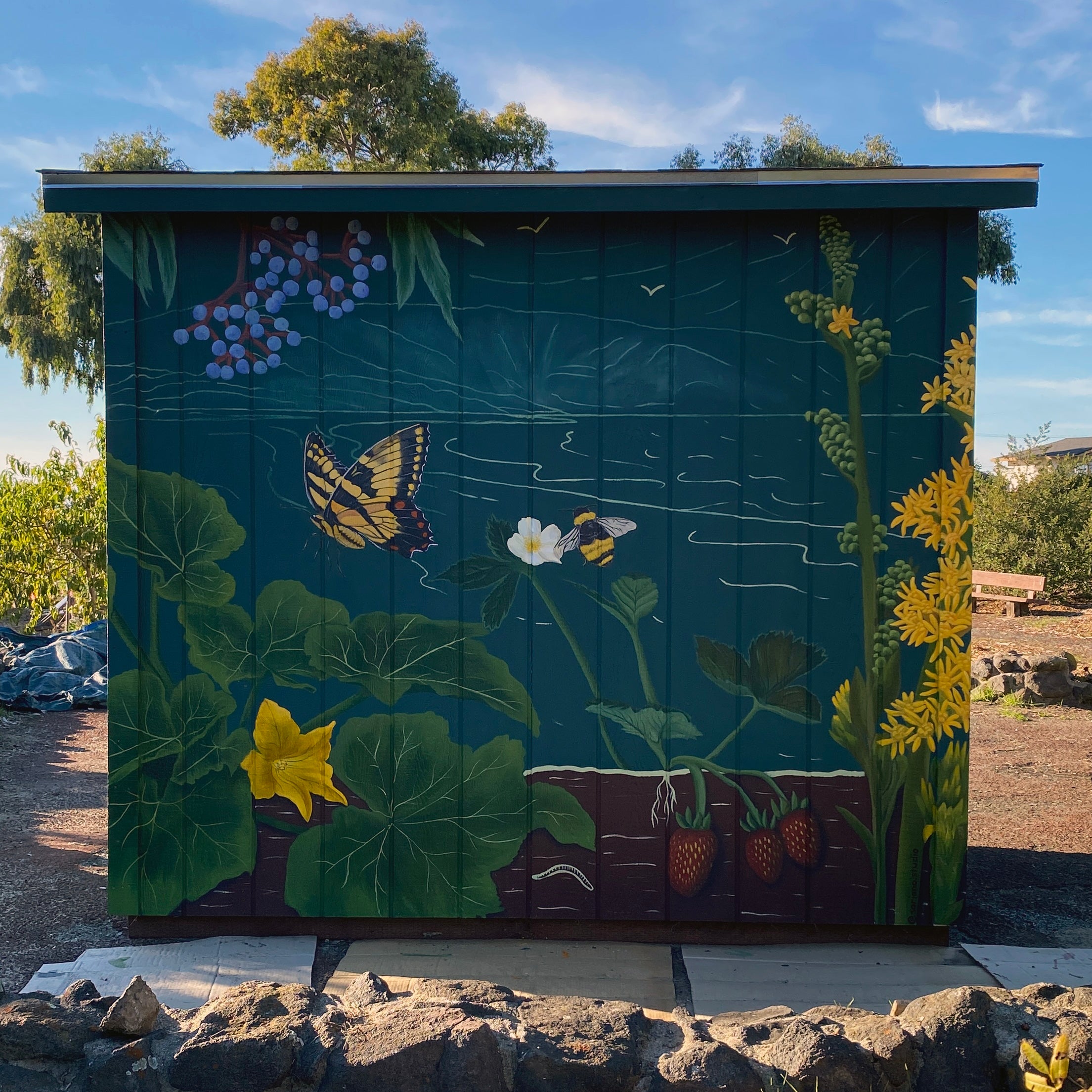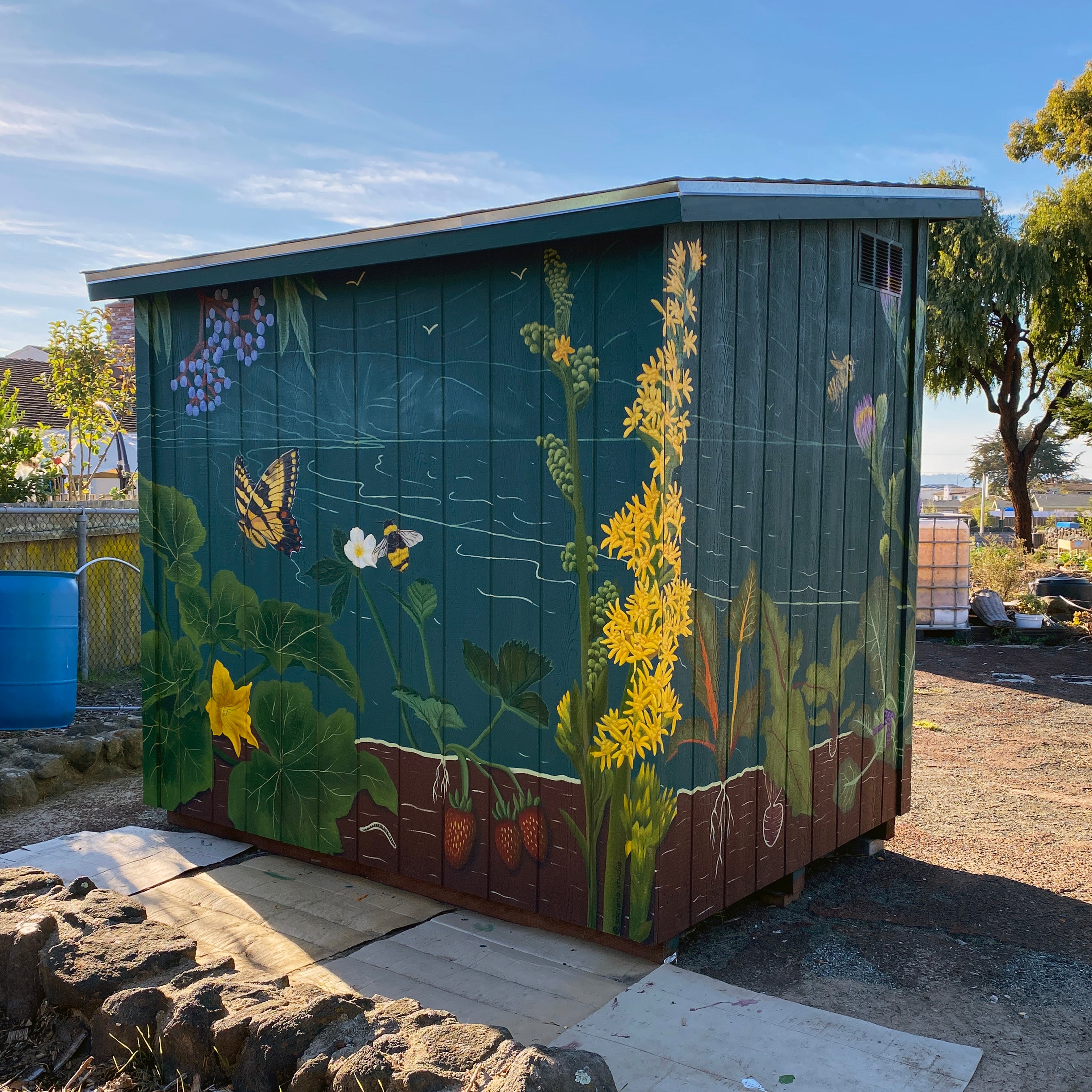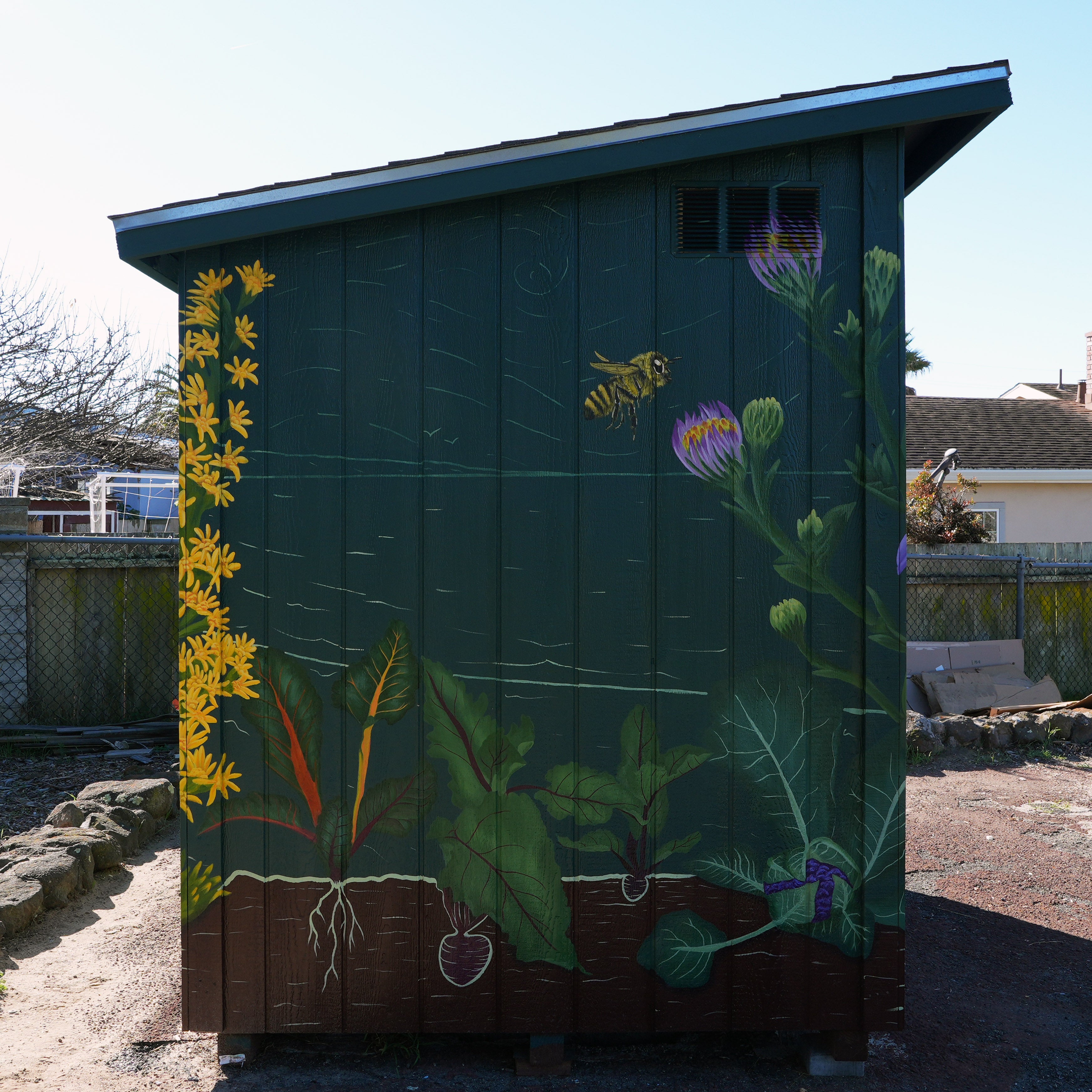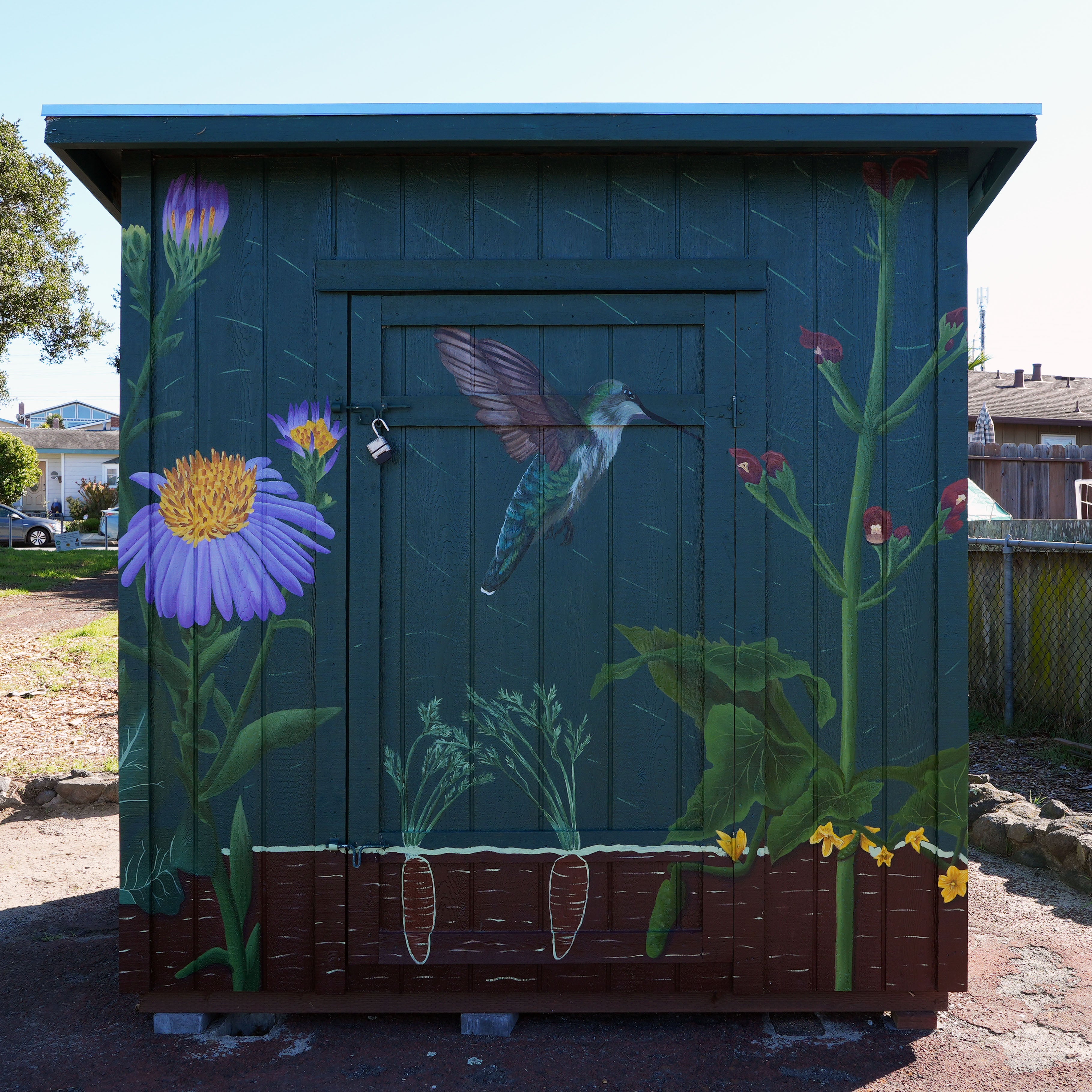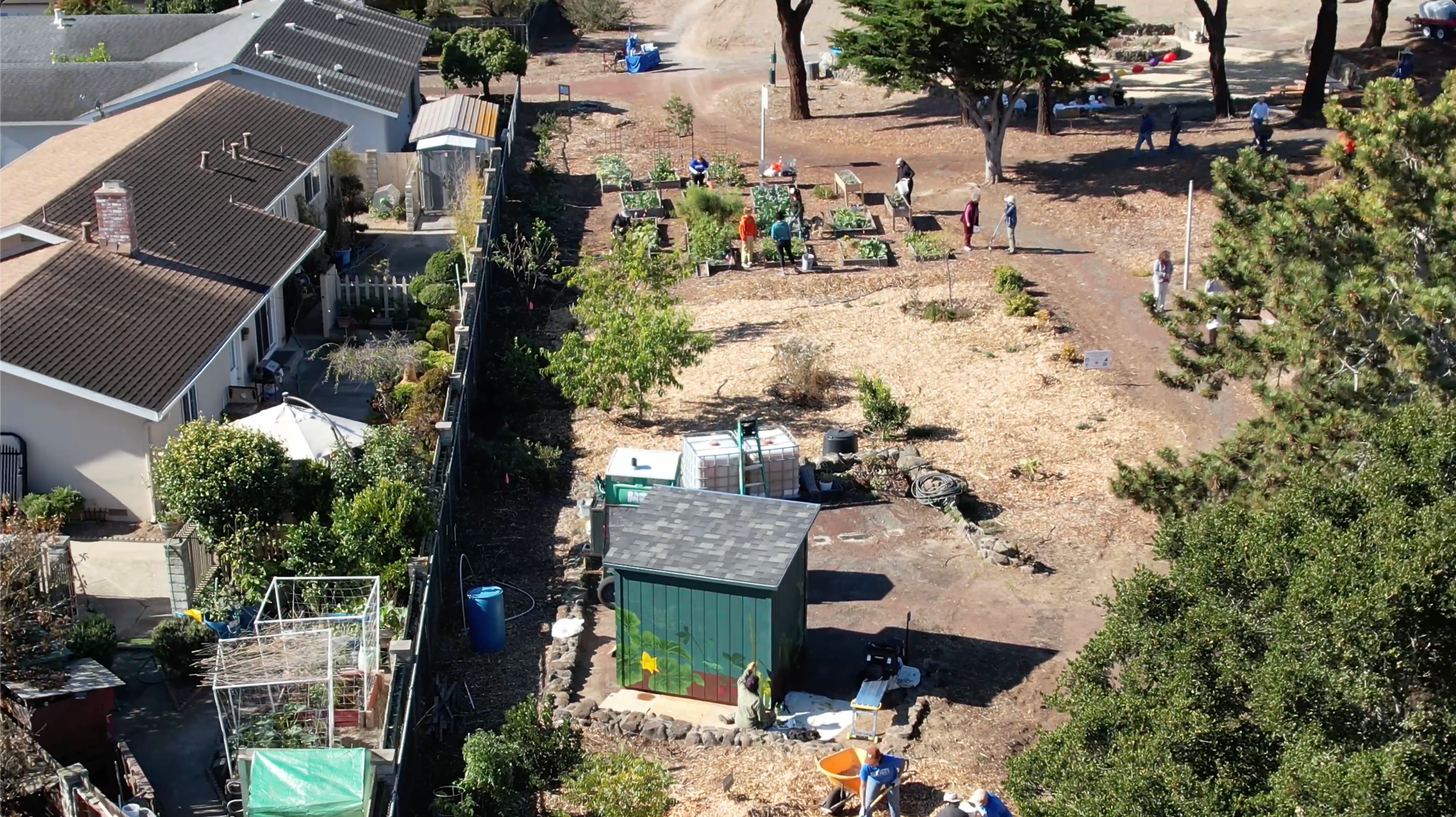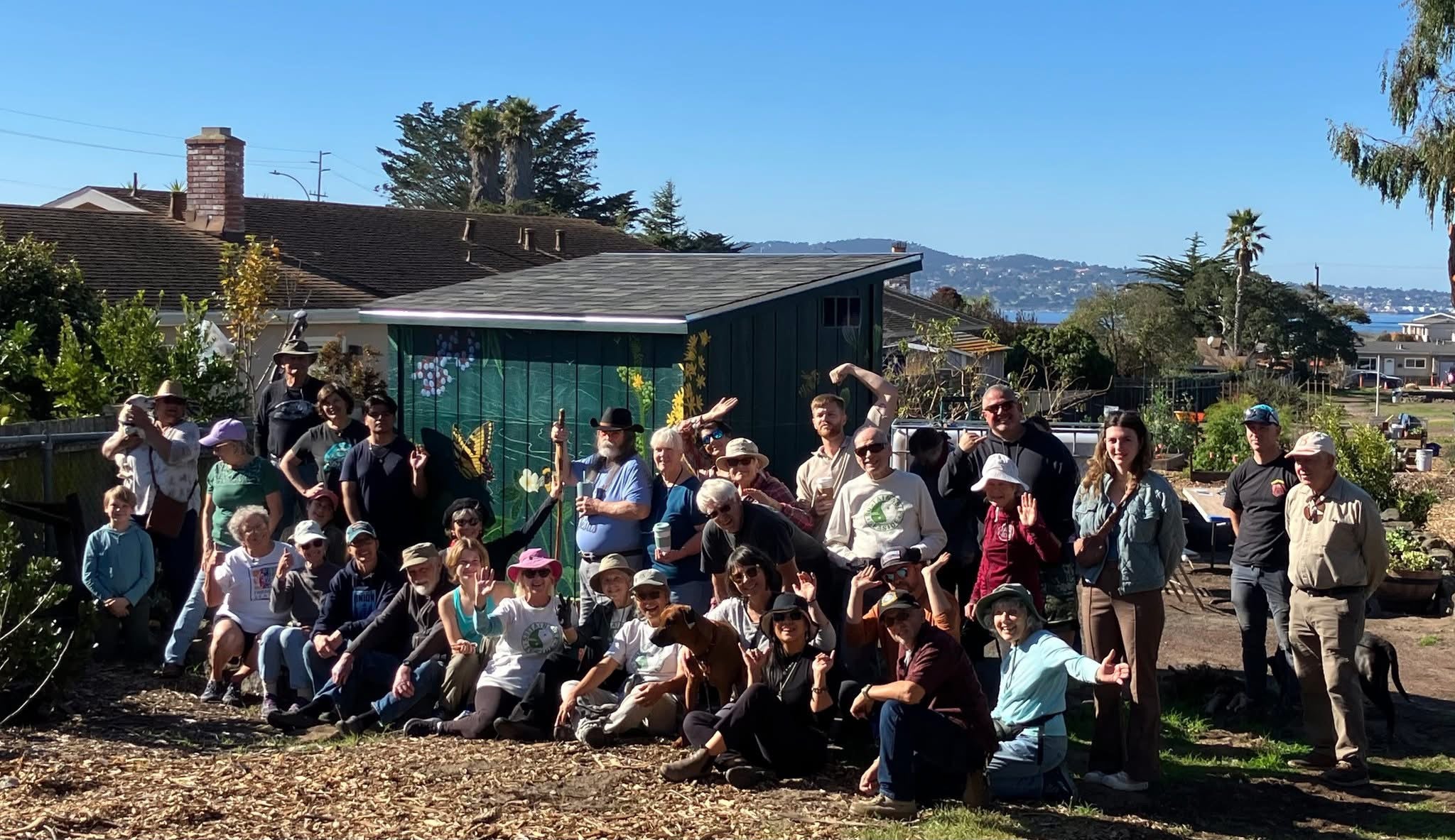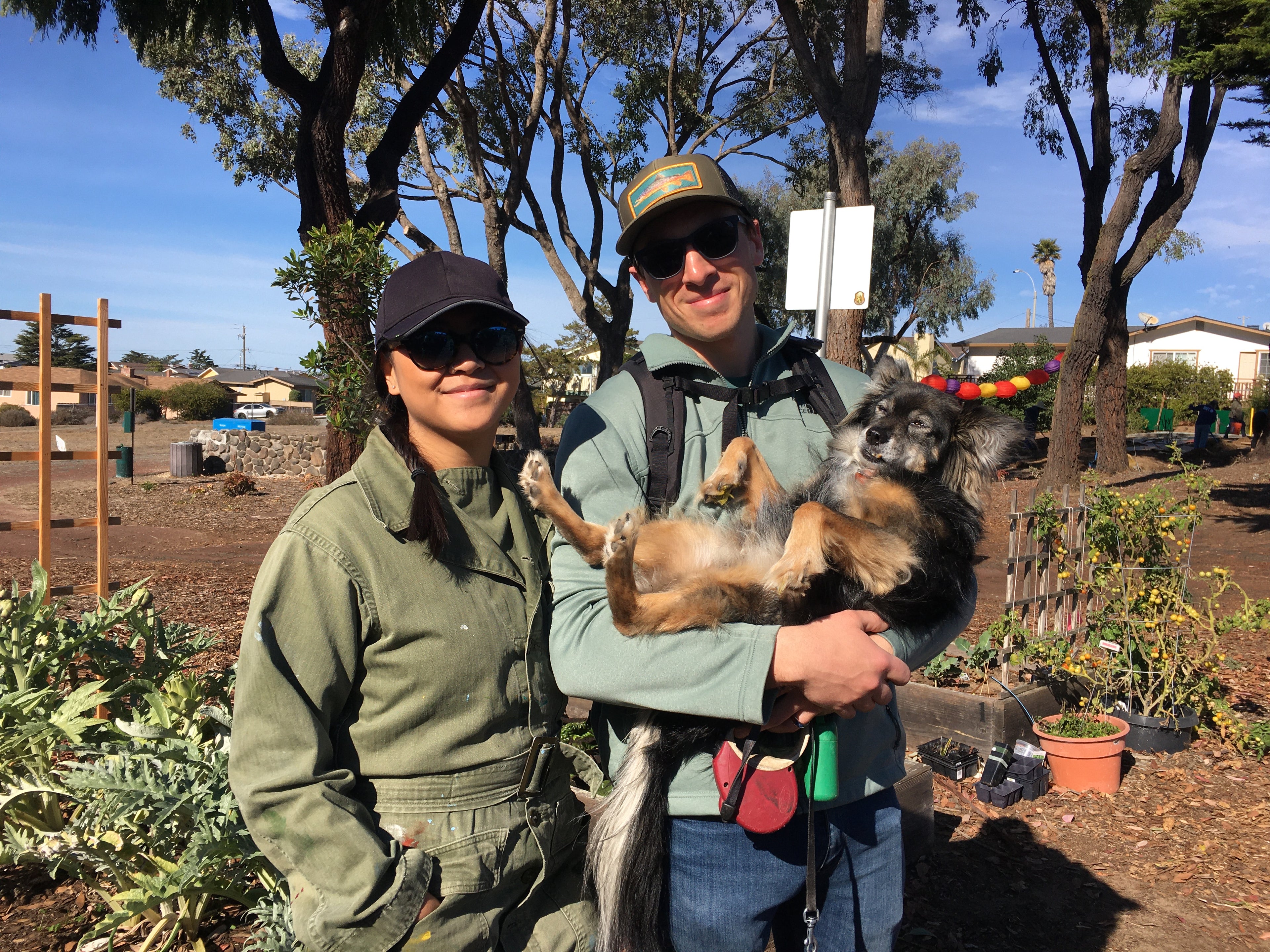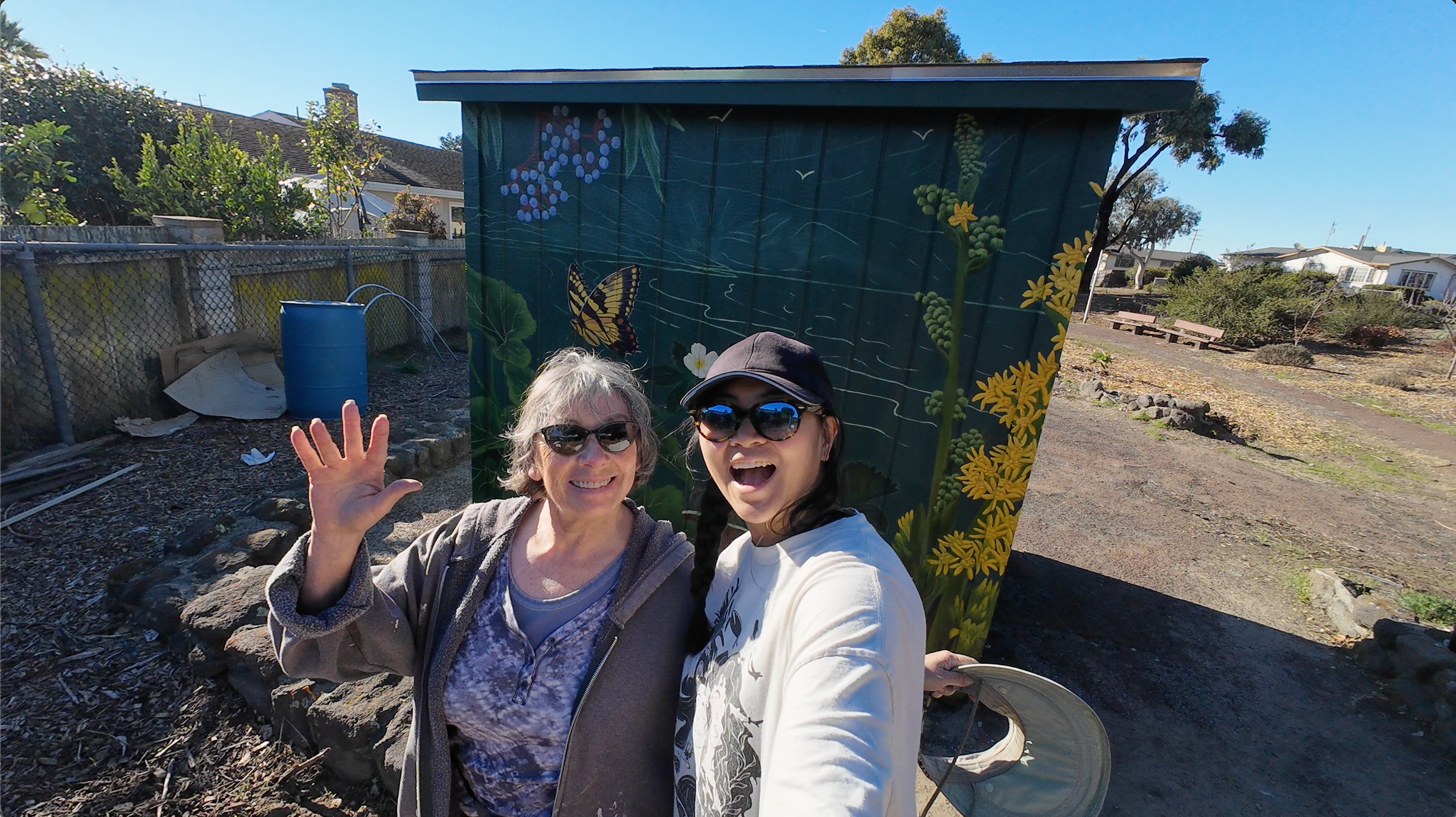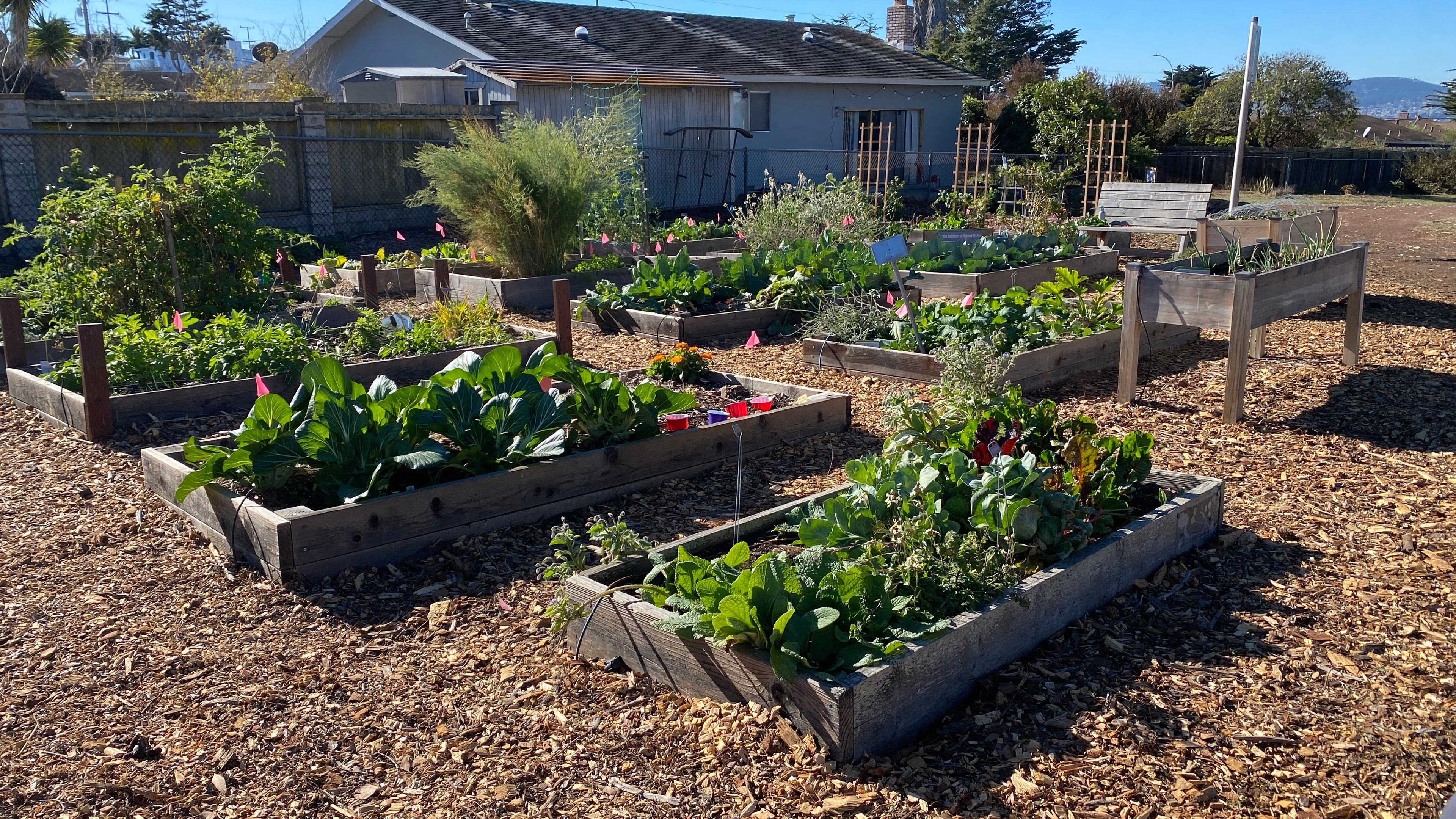Wild & Grown
The Havana Soliz Park in Seaside, California, is the biggest park (out of 25!) within the city that needed good tender loving care. With the help of the Science Illustration Program at CSUMB, Friends of Seaside Parks (FOSPA), and Blue Zones Projects Monterey (BZP), I was brought in to paint their new shed to highlight their diverse and expansive community and pollinator gardens.
Background on Park & Partners
Seaside California is blessed with twenty-five parks in this small city of just over nine square miles. Havana Soliz is a neighborhood park built in 1967 located in Upper Seaside. For those that grew up in this neighborhood, they remember a park with large expenses of grass and greenery. Some neighbors talk about how they grew up in Havana Soliz park and the memories they made there. Over the last 20 years and with the need to cut back on water consumption, the irrigation for the park was taken out and the park fell into neglect. In the past three years, however, the City has made a priority of park improvement and Havana Soliz Park is seeing a revitalization - a renaissance - with the help of Friends of Seaside Parks and Blue Zones Project Monterey County.
Friends of Seaside Parks (FOSPA) is a volunteer-led non-profit organization that supports the development and maintenance of parks and open green spaces in the City of Seaside, California. Volunteers create habitat for native plants, trees, pollinators, and wildlife, and foster a sense of community and civic pride in the cleanliness, safety, health and beauty of the city parks & neighborhoods.
Blue Zones Project Monterey County is a community-centered wellbeing initiative based on the research of National Geographic explorer Dan Buettner, who traveled the world studying longevity "hotspots”. Our work leverages that research to support PEOPLE, PLACES and POLICY which helps individuals live longer, healthier and happier lives. Community gardens, urban greening, public art and park beautification efforts, such as the amazing work at Havana Soliz Park, aligns with our mission perfectly.

Before starting the project, I met with the representatives of FOSPA and Blue Zones Projects, Jeannie and Tanja, and we talked about their hopes and ideas about the community garden and accompanying mural.
Soon after our initial meeting, we hosted a community engagement event, where FOSPA, BZP, and I gathered together with local neighbors and volunteers to prepare both gardens for the winter season. I prepared a rock painting table and survey box, chatted with the community, and gained insight to their lives and what they wanted to see in the mural.
Based on their responses, I combined their hopes, ideas, and dreams into one vision. Together, we created Wild & Grown, a mural dedicated to educating others about community, gardening, and supporting our native wildflowers. and pollinators.
The Final Design
Seeing how there are a lot of native plants and garden veggies/fruits to choose from, I decided to look through my notes, tally up the community’s thoughts,and create a design that highlights and distinguishes the native flora from the garden flora. I researched these native plants to be both great pollinating and medicinal plants.
California Natives included: Blue Elderberry (Sambucus mexicana), California Goldenrod (Solidago velutina ssp. californica), California Aster (Symphyotrichum chilense), Bee Plant (Scrophularia californica)
Veggie and fruit plants included: Zucchini (Cucurbita pepo), Strawberry (Fragaria ananassa), Rainbow Chard (Beta vulgaris subsp. cicla var. Flavescens), Beets (Beta vulgaris), Purple Cauliflower (Brassica oleracea var. botrytis), Carrots (Daucus carota), and Cucumbers (Cucumis sativus)
Pollinators included: Western Tiger Swallowtail (Papilio rutulus), Sitka Bumble Bee (Bombus sitkensis), and Western Honey Bee or European Honey Bee (Apis mellifera)

Upon further research, I have found that zucchini can be planted with strawberries to offer shade if properly placed apart, but overall, it is not recommended to plant together because they attract the same pests and could compete for nutrients if planted too close together. Both actually benefit from having their own space in individual planter boxes. Zucchini is a competitive plant, but there are better companions to help with pest control and soil health.
Medicinal Properties of
Blue Elderberry
(Sambucus mexicana)
"Only the blue or purple berries of elderberry are edible. Edible berries and flower are used for medicine, dyes for basketry, arrow shafts, flute, whistles, clapper sticks, and folk medicine. The active alkaloids in elderberry plants are hydrocyanic acid and sambucine. Both alkaloids will cause nausea so care should be observed with this plant. Elderberries are high in vitamin C. The red berries of other species are toxic and should not be gathered.
Elderberry flowers contain flavenoids and rutin, which are known to improve immune function, particularly in combination with vitamin C. The flowers also contain tannins, which account for its traditional use to reduce bleeding, diarrhea, and
congestion."

"Cauliflower roots are shallow, but despite that, beetroot usually pairs well with them. You can plant them pretty close to each other as long as the cauliflower won’t get shaded out by beet greens or vice versa. Remember that cauliflower can have pretty massive greens itself, and you’ll want to keep the beets out from under them.
Chard and cauliflower are content to exist with each other without giving or taking. Both plants have shallow root systems, but when appropriately spaced, they won’t get tangled and fight for water. They don’t need the same nutrients, so they’re not competing for that, either. Pair these two peaceful residents with some herbs that bring in beneficial insects."
Medicinal Properties of California Goldenrod (Solidago velutina ssp. californica)
"Native Californians use powdered, dried leaves as a disinfecting powder for skin sores, wounds, burns and rashes. A decoction (tea) made from leaves was traditionally used for feminine hygiene, as a wash for skin sores and as a hair rinse.
Crafters also find good use for goldenrods.The flowering stems make good dried (pressed) flowers that retain their color for years. Flowering stems and leaves can
be used to make lovely soft yellow dyes that can be used to color wool, silk or cotton yarn or cloth."
Extra Sources:
https://smmtc.org/plantofthemonth/California_Goldenrod.php
https://mother-natures-backyard.blogspot.com/2014/09/plant-of-month-september-california.html

"Carrots are a neutral companion for cucumbers. While they don’t add any benefits to the crop, they do make use of the bare soil and dappled shade by trellis cucumbers."
Medicinal Properties of Bee Plant (Scrophularia californica)
"In northern Baja California, Tipai native Americans made a tea from the root of bee plants to relieve fevers. Using the twigs and leaves, indigenous California Pomo and Ohlone made a poultice or wash for infections and boils. The plant juice has also been used as an eyewash."
Final Words
With everything said, I would like to encourage you to build upon the research I've committed to sharing with you. My eyes are my own perspective, and if you would like to learn more, please venture forward and find more information to ascertain our findings. Happy Learning!
Thank you, Friends of Seaside Parks and Blue Zones Project Monterey County, for creating a wonderful space to learn, grow, and make connections. I also want to extend my gratitude to Reid for introducing me to Jeannie and Tanja, who then introduced me to Catherine, Christine, and SO many more wonderful neighbors! All are now a special part of my life, and for that, I am grateful 🥹 They have shared their passion, excitement, and adoration for nature, and this project would not have been as successful without them!
The community had a big part in the mural design, and with their engagement, I was able to gain invaluable insight. This insight allowed me to expand my perspective on what this community wanted, needed, and believed.
WILD & GROWN healed me in many ways. I love Seaside. I love the environment, the people, and everything about this city. Thank you, City of Seaside, for sharing space with me and entrusting me with a meaningful project. I look forward to seeing you grow more in your gardens and support diverse communities both human and wild.

